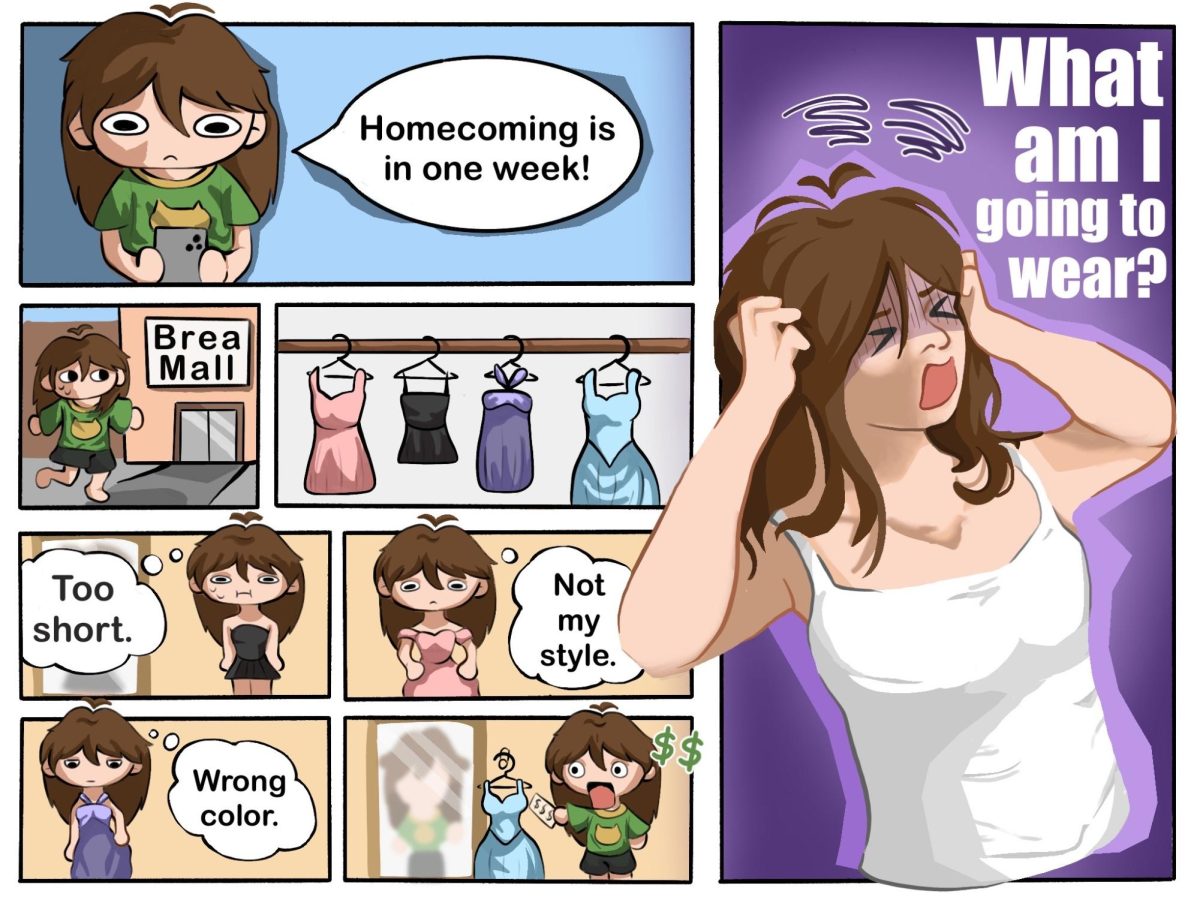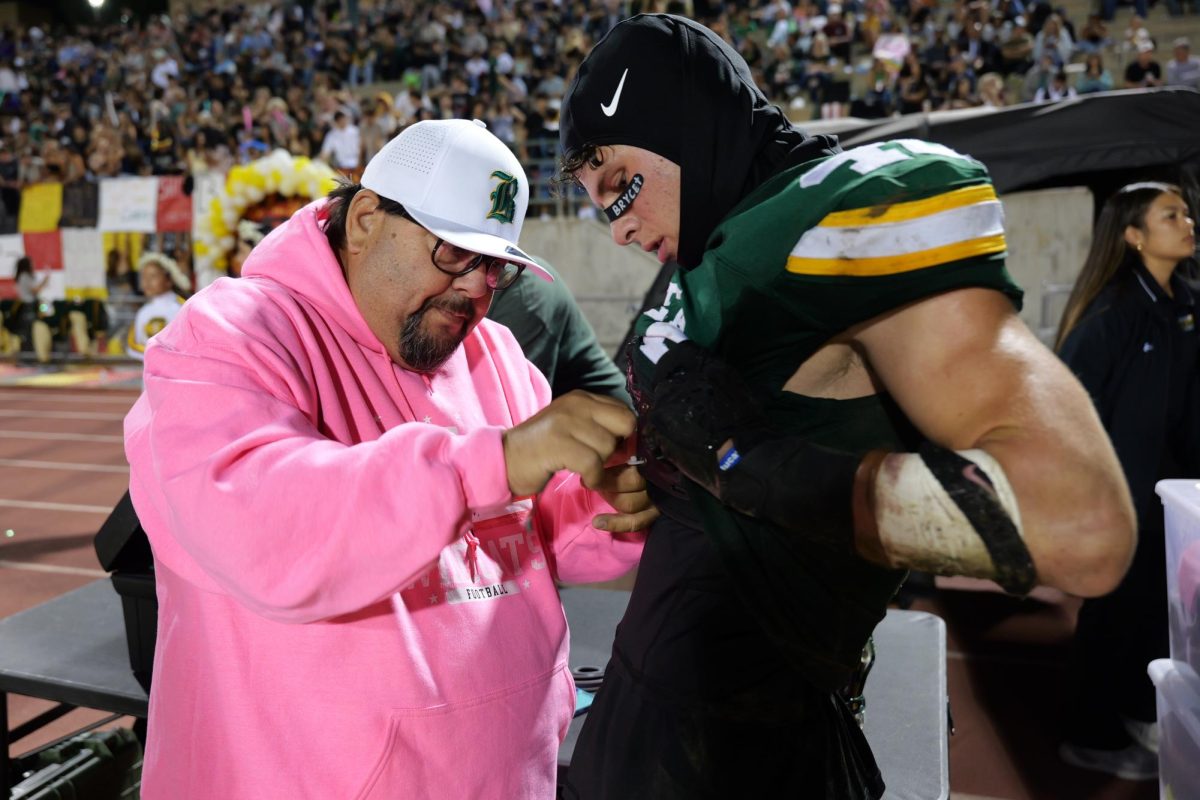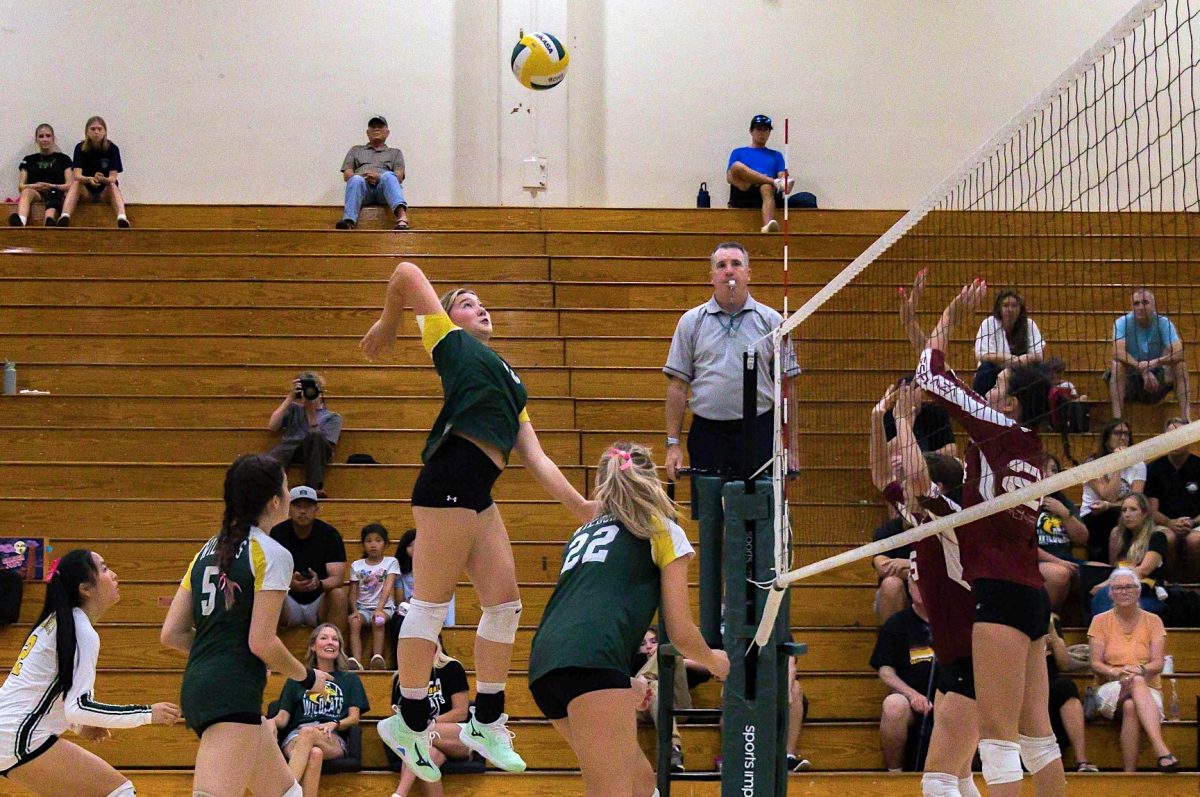When somebody announces that they scored front row seats, the usual reaction is excitement, enthusiasm, and sometimes even envy. But when I announce that I nabbed a front row seat, I’m met with confusion and eye rolls.
The difference? Their front row seats are for an upcoming Angels baseball game or a long-awaited concert. My front row seat, on the other hand, is in my classes.
As 1700 Brea Olinda High School students arrive on campus Aug. 14, they’ll face a familiar dilemma: where to sit in their classes.
From a 10-person geometry class to an English class of 35 boisterous sophomores, sitting in the front row — a reliable space of focus and engagement — never fails me.
But despite the obvious benefits of sitting front and center in class, the choice to sit mere feet from our teachers is often made fun of and stereotyped. As a chronic front row enjoyer, I’ve heard it all: I’m “over-the-top,” “obnoxious,” “attention-seeking,” a “try hard.”
But I’m none of those things. Just a student who cares about her education.
Another student who cares about their education is the protagonist of the sitcom, Young Sheldon. Sheldon sits in the front of class, believing that, “Teachers always sit smart kids near the front.” While I cannot prove or disprove that teachers intentionally seat the brightest students in the front row, Sheldon is correct that front row seating does, indeed, boost academic performance, from providing more focus, to fewer distractions, to stronger student-teacher relationships.
There’s even data to support the academic advantages of sitting in the front row: A 2020 study conducted by the National Center for Biotechnology Information revealed that students who sit in the front of their classes have, on average, a 20% higher GPA than their peers who sit elsewhere.
While I do not know if my GPA is 20% higher than that of my peers, I do know how the front row has benefited me.
With my raised hand in their eye-sight, my laughter at their awkward attempts at humor within earshot, and our proximity inviting conversation, sitting in the front row has allowed me to build relationships with my teachers.
While some students choose to avoid their teacher by hiding in the middle rows, and while some even self-banish to the very back of the classroom, willfully unengaged and voluntarily as far as possible from the board, TV, and their teacher, students sitting in the front row choose to prioritize education and relationships.
Ignore the stereotypes and the occasional side-eye from those students making a beeline for the back of the room and pick a seat front and center.
Sure, you’ll always be in your teacher’s line of sight and will often be the only audience for their “jokes,” and it will be tough to dodge the “try-hard” accusations from closed-minded peers, but being faithfully front row might boost your GPA, strengthen bonds with teachers, and make the more challenging classes a whole lot more survivable.















Brittany • Aug 18, 2025 at 8:16 am
Great points made here! Thank you for sharing what works for you. Hopefully your confidence will influence others, who may want to (or need to) sit in the front but don’t have the courage to yet. Well written, interesting, and helpful!